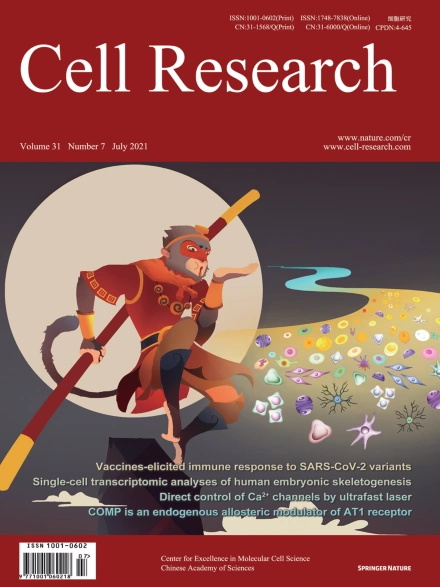
Advanced Search
Submit Manuscript
Advanced Search
Submit Manuscript
Volume 31, No 7, Jul 2021
ISSN: 1001-0602
EISSN: 1748-7838 2018
impact factor 17.848*
(Clarivate Analytics, 2019)
Volume 31 Issue 7, July 2021: 732-741 |
Humoral immune response to circulating SARS-CoV-2 variants elicited by inactivated and RBD-subunit vaccines
Yunlong Cao1,2,* , Ayijiang Yisimayi1,2,3 , Yali Bai1,4 , Weijin Huang5 , Xiaofeng Li6 , Zhiying Zhang1,3 , Tianjiao Yuan1,2,3 , Ran An1,2 , Jing Wang1,2,3 , Tianhe Xiao1,2,7 , Shuo Du1,3 , Wenping Ma1,2,7 , Liyang Song1,2,7 , Yongzheng Li1,2 , Xiang Li1,2,7 , Weiliang Song1,2,3 , Jiajing Wu5 , Shuo Liu5 , Xuemei Li8 , Yonghong Zhang8 , Bin Su8 , Xianghua Guo8 , Yangyang Wei1,7 , Chuanping Gao1,3 , Nana Zhang6 , Yifei Zhang6 , Yang Dou9 , Xiaoyu Xu10 , Rui Shi11 , Bai Lu9 , Ronghua Jin12 , Yingmin Ma8 , Chengfeng Qin6,* , Youchun Wang5,* , Yingmei Feng8,* , Junyu Xiao1,3,* , Xiaoliang Sunney Xie1,2,3,*
1Beijing Advanced Innovation Center for Genomics (ICG), Peking University, Beijing, ChinaSARS-CoV-2 variants could induce immune escape by mutations on the receptor-binding domain (RBD) and N-terminal domain (NTD). Here we report the humoral immune response to circulating SARS-CoV-2 variants, such as 501Y.V2 (B.1.351), of the plasma and neutralizing antibodies (NAbs) elicited by CoronaVac (inactivated vaccine), ZF2001 (RBD-subunit vaccine) and natural infection. Among 86 potent NAbs identified by high-throughput single-cell VDJ sequencing of peripheral blood mononuclear cells from vaccinees and convalescents, near half anti-RBD NAbs showed major neutralization reductions against the K417N/E484K/N501Y mutation combination, with E484K being the dominant cause. VH3-53/VH3-66 recurrent antibodies respond differently to RBD variants, and K417N compromises the majority of neutralizing activity through reduced polar contacts with complementarity determining regions. In contrast, the 242–244 deletion (242–244Δ) would abolish most neutralization activity of anti-NTD NAbs by interrupting the conformation of NTD antigenic supersite, indicating a much less diversity of anti-NTD NAbs than anti-RBD NAbs. Plasma of convalescents and CoronaVac vaccinees displayed comparable neutralization reductions against pseudo- and authentic 501Y.V2 variants, mainly caused by E484K/N501Y and 242–244Δ, with the effects being additive. Importantly, RBD-subunit vaccinees exhibit markedly higher tolerance to 501Y.V2 than convalescents, since the elicited anti-RBD NAbs display a high diversity and are unaffected by NTD mutations. Moreover, an extended gap between the third and second doses of ZF2001 leads to better neutralizing activity and tolerance to 501Y.V2 than the standard three-dose administration. Together, these results suggest that the deployment of RBD-vaccines, through a third-dose boost, may be ideal for combating SARS-CoV-2 variants when necessary, especially for those carrying mutations that disrupt the NTD supersite.
https://doi.org/10.1038/s41422-021-00514-9